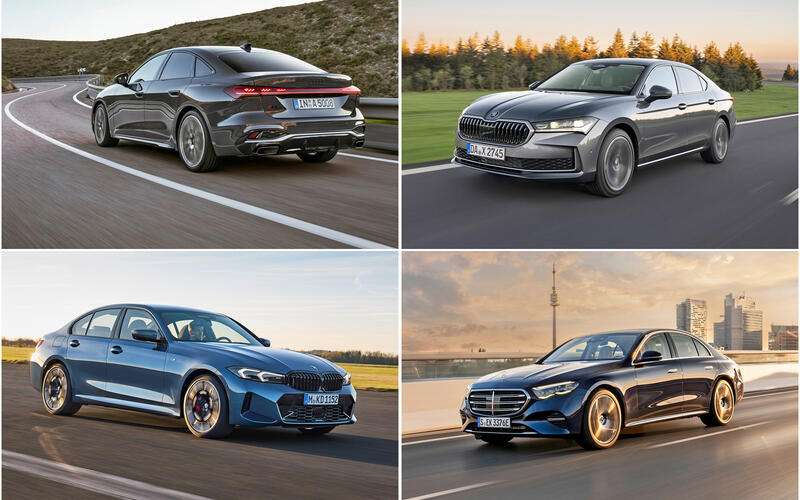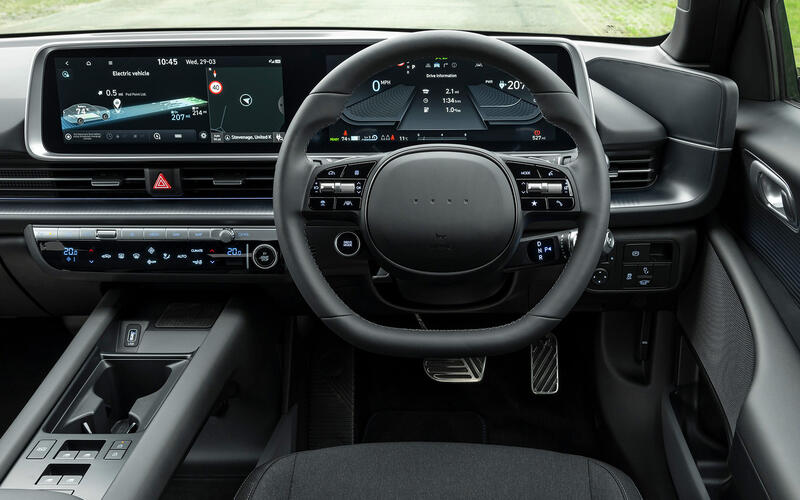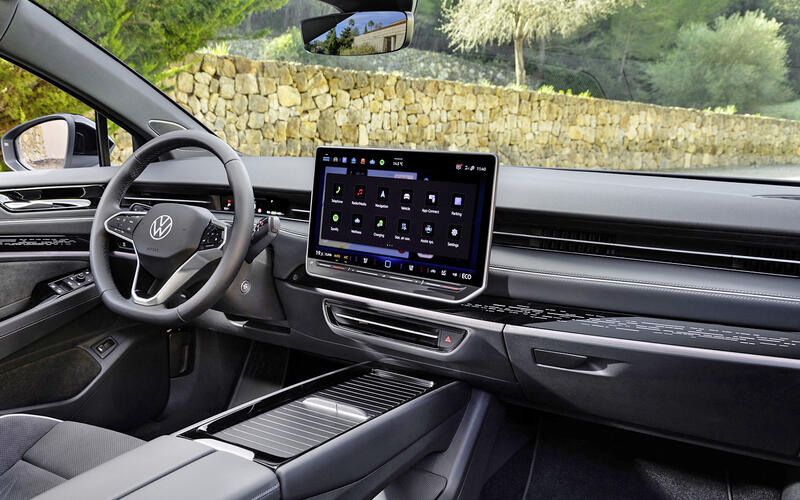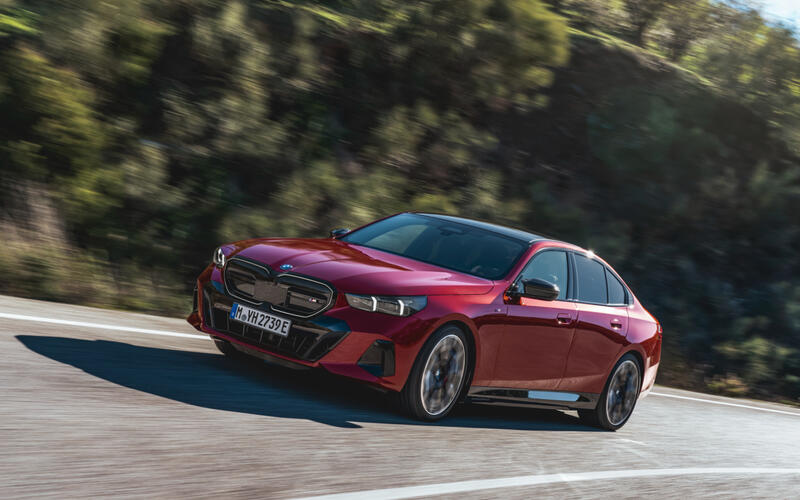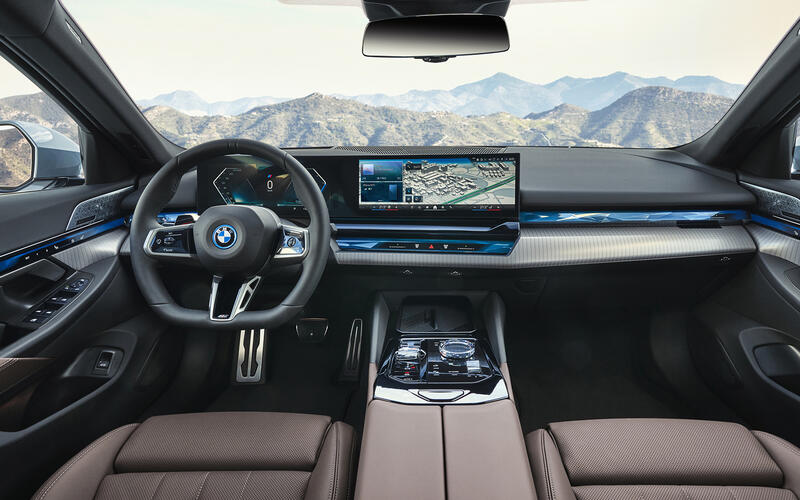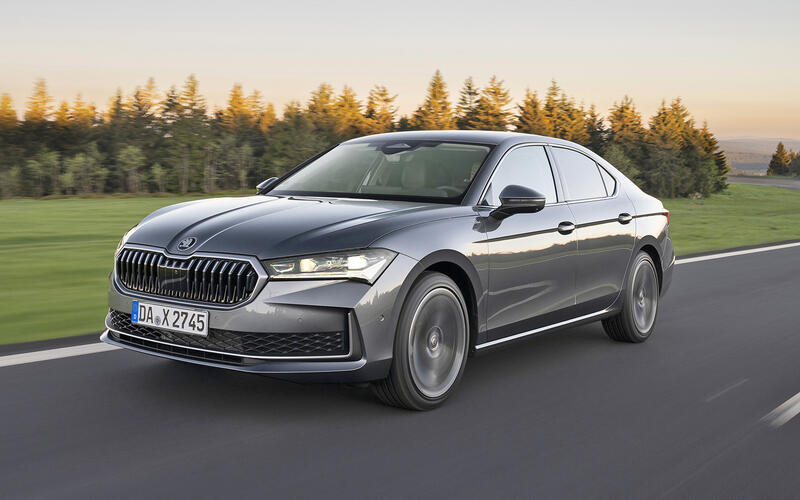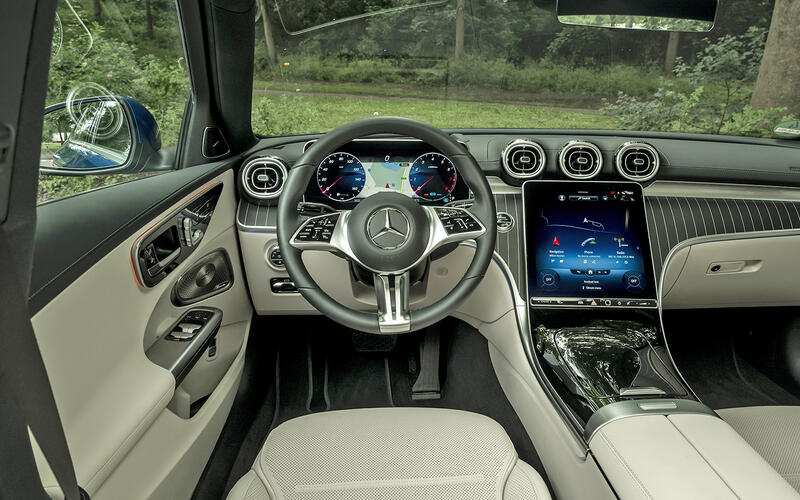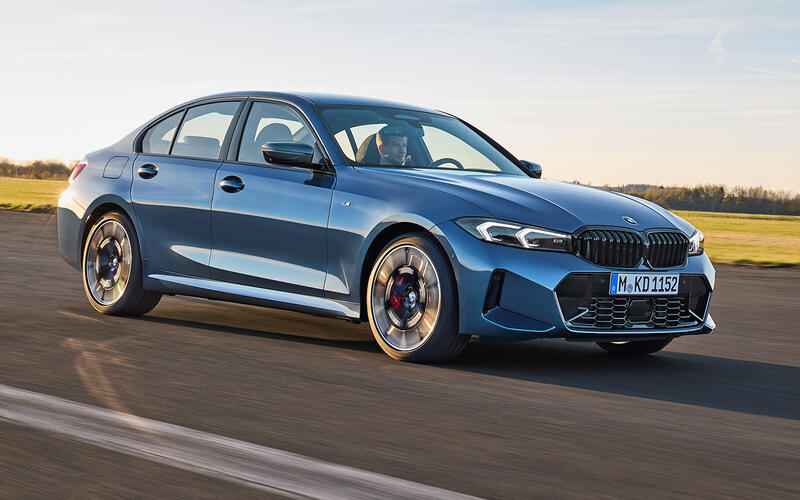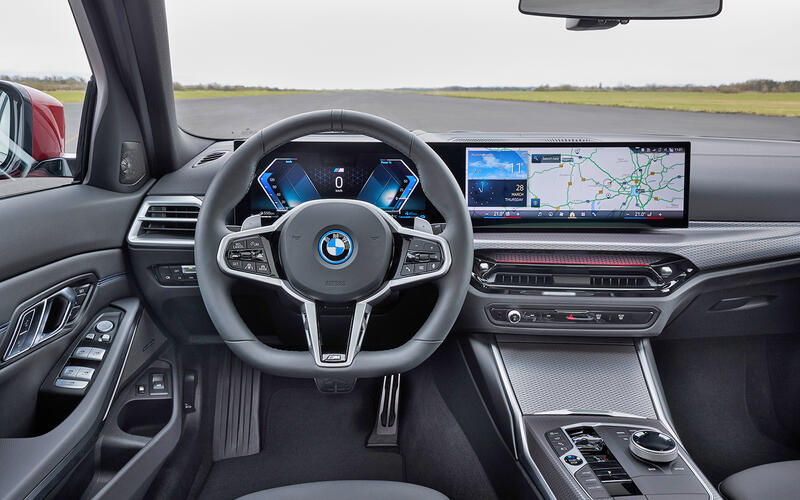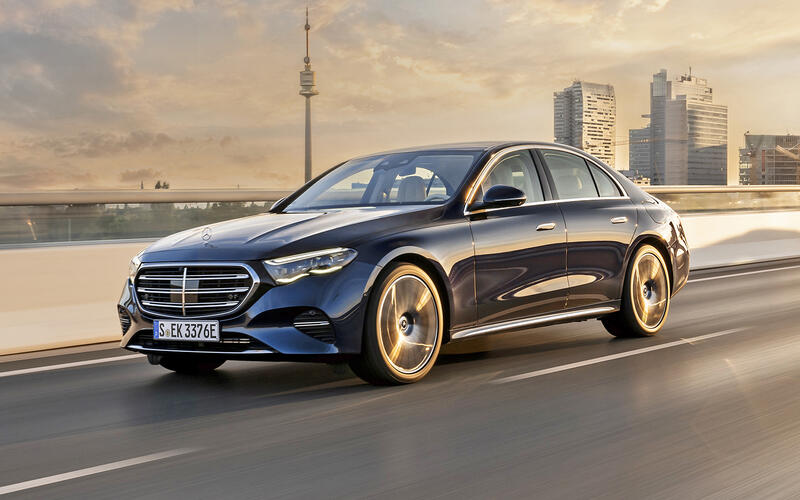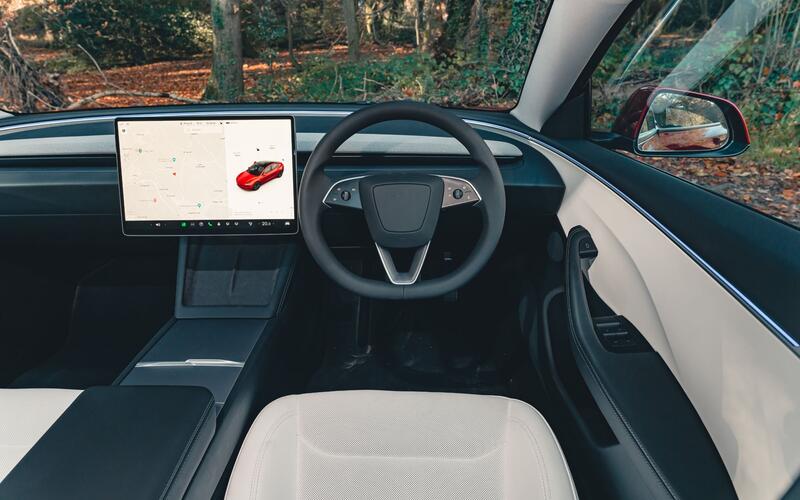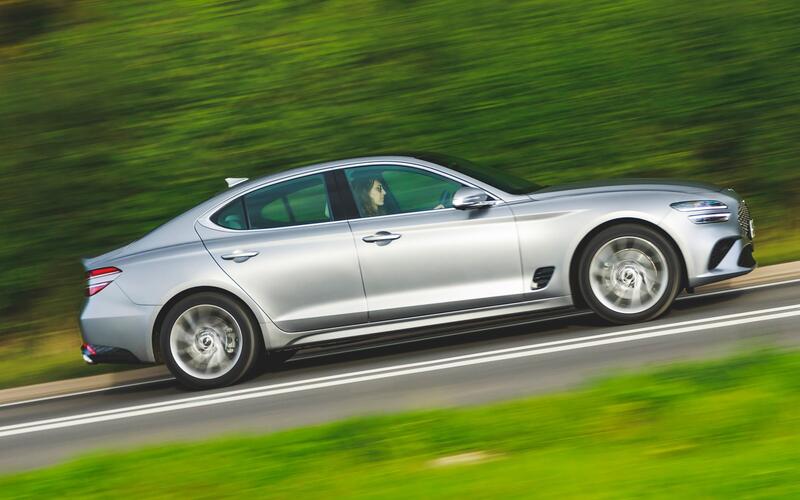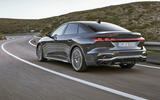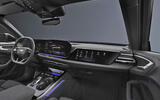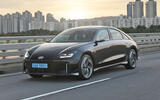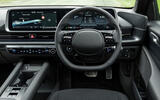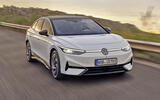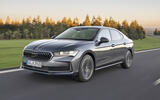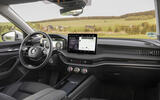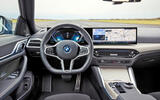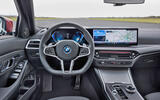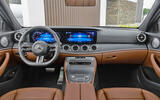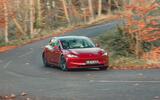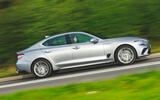 Slide of
Slide of
The executive car class has never offered more choice than today.
Not only are there traditional petrol and diesel-powered saloons to consider, but there are also a growing number of plug-in hybrid and electric options. Let’s take a look at the 10 best, starting at number 10, and also the one to avoid:
 Slide of
Slide of
10: Audi A5
Think of the Audi A5 as being three cars in one, because not only is it picking up where the old Audi A4 executive saloon left off, but also picks up the baton from the previous Audi A5 Coupé and A5 Sportback.
There are both petrol and diesel engines to choose from, but we'd head straight for the A5 e-Hybrid, which can officially manage up to 67 miles on electric power alone – and that can have tax advantages in some countries.
 Slide of
Slide of
10: Audi A5
Elsewhere, the A5 offers a comfortable driving position with lots of adjustment, and a decent amount of rear-seat space for your passengers. However, its boot is smaller than that of the outgoing A4, and you'll get less into it than you would into rivals including the BMW 3 Series and Mercedes C-Class.
 Slide of
Slide of
9: Hyundai Ioniq 6
Like many of the other models on this list, the Ioniq 6 is an electric car. The Ioniq 6 has a smart interior, is good to drive and quiet on the move, and has a charging speed of up to 220kW, so if you can find a fast enough public charger you won't be waiting around ages before you can hit the road again. Once charged up, the rear-wheel-drive RWD version we recommend is officially good for a range of up to 338 miles.
 Slide of
Slide of
9: Hyundai Ioniq 6
Performance in RWD form is quick enough (0-62mph in 7.4 seconds) but no match for the fastest electric models. There's also a four-wheel-drive version that manages 0-62mph in 5.1 seconds if rapid acceleration is your thing.
The two front seats are separated by a large, flat centre console that’s said to have been designed so that you can easily prop a laptop on it –for example to catch up on emails while the car charges.
 Slide of
Slide of
8: Volkswagen ID 7
Volkswagen's take on the electric executive car offers some seriously long legs – indeed, even entry-level Pro models have an official range of up to 379 miles between charges, which is more than the standard Tesla Model 3 can manage. Go for the Pro S, and that figure increases to 436 miles, which means you might only charge the VW up every week.
 Slide of
Slide of
8: Volkswagen ID 7
There's a pleasing mix of materials on show inside the ID 7, ranging from vegan leather on the seats to suede inserts on the doors. Your passengers will appreciate the high-end feel, but also the sheer space on offer, because the ID 7 is a huge car. Indeed, three adults can sit comfortably on its rear bench, which isn't something you could say about every car in this story.
 Slide of
Slide of
7: BMW i5
It may have a different name, but the i5 is a fully electric version of the new BMW 5 Series saloon. That's evident by the fact that the two cars have very similar styling. As you might expect, though, it's a different underneath; the i5 is available with single or dual-electric motors and an 81.2kWh battery.
Out of the two versions, the single motor version (eDrive40) is our favourite; it provides quick performance, hushed driving manners and a long official range of 349 miles (although the Mercedes EQE can travel farther). Being based on the same underpinnings as the BMW i7, the i5 also offers a good balance of ride comfort and handling, and it tops the EQE in this regard.
 Slide of
Slide of
7: BMW i5
We're also particularly fond of the i5's interior, which has a range of plush materials and a good infotainment system. If it weren't so expensive, it would be higher up this list. The i5's touch-sensitive ‘interaction bar’ features haptic controls that are surprisingly easy to use.
 Slide of
Slide of
6: Skoda Superb
Calling a car the Superb gives it a lot to live up to, but Skoda's executive car is fully deserving of its name. It's comfortable, well made, generously equipped and great value for money. It’s also very spacious in the back seats (few cars this side of the Mercedes S-Class can match it), and the boot is massive.
It also gets a good range of engines, including petrol and diesel variants, although we think the 148bhp 1.5-litre petrol (badged as the 1.5 TSI 150) is the best option.
 Slide of
Slide of
6: Skoda Superb
A plug-in hybrid variant should arrive soon, and that will likely become a good choice for many drivers. Both the hatchback and estate versions of the Superb have a handy storage cubby on each side of the boot opening.
 Slide of
Slide of
5: BMW i4
BMW's i4 electric car is fast, comfortable and very hushed at high speeds. Our preferred version is the eDrive40 model, which offers an impressive official range of 367 miles. Whichever version you go for, the i4 is great to drive and smart inside, making it a compelling alternative to a Tesla Model 3. It’s also a good choice if you prioritise practicality, with its hatchback boot opening and 40/20/40 split folding rear seats.
 Slide of
Slide of
5: BMW i4
The i4’s interior is impressive, and its front seats have more side bolstering than those in a Tesla Model 3 or BYD Seal, but you have to pay extra for electric adjustment and lumbar support.
 Slide of
Slide of
Mercedes-Benz Clase C
Many rivals outshine the C-Class in terms of interior quality, but the C300e plug-in hybrid (PHEV) version offers an impressive official electric-only range of 68 miles – almost double the official 37 miles the BMW 330e can manage. That means it makes for a very cheap company car when you take Benefit-in-Kind tax into account.
In the corners, the C-Class is very composed – especially in C300e form, with its standard rear air suspension. In fact, it strikes a wonderful balance between ride comfort and cornering composure, and does a brilliant job of managing the extra weight of the battery.
 Slide of
Slide of
4: Mercedes-BenzClase C
While a first glance at the interior of the C-Class reveals the kind of visual pizazz which is likely to impress your passengers, a closer look reveals far too many cheap plastics for our liking. Both the 3 Series and the far cheaper Skoda Superb surround you with better materials.
The C-Class's infotainment system is more distracting to use on the move than the 3 Series Touring's iDrive system, which has a physical rotary controller, as well as touchscreen control; we ’d also prefer some physical controls for the climate control system.
 Slide of
Slide of
3: BMW Serie 3
For many, the 3 Series remains the de facto executive car and company car saloon, and it's easy to see why. The latest version is the best-steering BMW of recent times and matches that with stellar body control and plenty of grip, yet still manages to serve up good ride comfort and relaxing refinement.
Our preferred version of the 3 Series is the 330e plug-in hybrid (PHEV). It offers strong performance and a decent official electric-only range of up to 37 miles, while promising lower running costs than non-hybrid versions. It won't surprise you to learn that the 330e will be the cheapest version for company car drivers to run, thanks to its lower Benefit-in-Kind tax rating, though the rival Mercedes C300e is even cheaper.
 Slide of
Slide of
3: BMW Serie 3
The interior of the 3 Series feels solid and well made (although it’s not quite a match for the Audi A4), and it gets one of the best infotainment systems in the business. However, BMW has removed some buttons on the dashboard, and all the climate control functions are now on the touchscreen – a backwards step in our opinion.
 Slide of
Slide of
2: Mercedes-Benz Clase E
The Mercedes E-Class name is synonymous with the executive car and the traditional company saloon, and this latest version helps to build on that. Indeed, the latest E-Class is slightly bigger than its predecessor, so the interior is noticeably more spacious.
In the front and back seats there's plenty of head, leg and shoulder room for you to get comfortable. There's also plenty of tech inside to keep your passengers occupied, with all versions offering the ability to download third-party apps such as TikTok or Zoom through the infotainment system.
 Slide of
Slide of
2: Mercedes-Benz Clase E
The E-Class – specifically in E300e form – is the best executive car if you're not ready to go electric. Being a plug-in hybrid (PHEV), it comes with a large 24.1kWh battery and an electric motor, which means you can travel 72 miles officially on electric-only power. That's significantly farther than the PHEV versions of its closest rival, the BMW 5 Series.
 Slide of
Slide of
1: Tesla Model 3
The Tesla Model 3 is a recurring member of the best-selling cars club, and its popularity is well earned. Indeed, if you're in the market for a new executive car and can charge up at home or at work, we'd suggest taking a good look at one and seeing if it can work for you.
Key to the appeal of the Model 3 is that it's not just a great electric car – it's a great all-rounder which just happens to be electric. Even in Standard Range form, the Model 3 is officially capable of travelling up to 318 miles between charges, while the Long Range model ups that figure to 436 miles – more than enough for the needs of most drivers.
 Slide of
Slide of
1: Tesla Model 3
That range, as well as the Tesla's 0% C02 emissions, will have tax advantages in many places. The Model 3 is also a spacious choice, and a couple of taller rear passengers won't feel like they're hemmed in. Indeed, the Tesla's tall rear windows and broad glass roof make it feel airier than the rival BMW i4, and the latest Model 3 has seen a real uptick in interior quality.
So that’s the best executive cars, but what about the one to avoid? Read on:
And the executive car to avoid...
 Slide of
Slide of
Genesis G70
While it comes well equipped, most of the G70's key rivals are quieter, better to drive, more practical and cheaper to run.
Access control:
Open
Include in Apple News:


